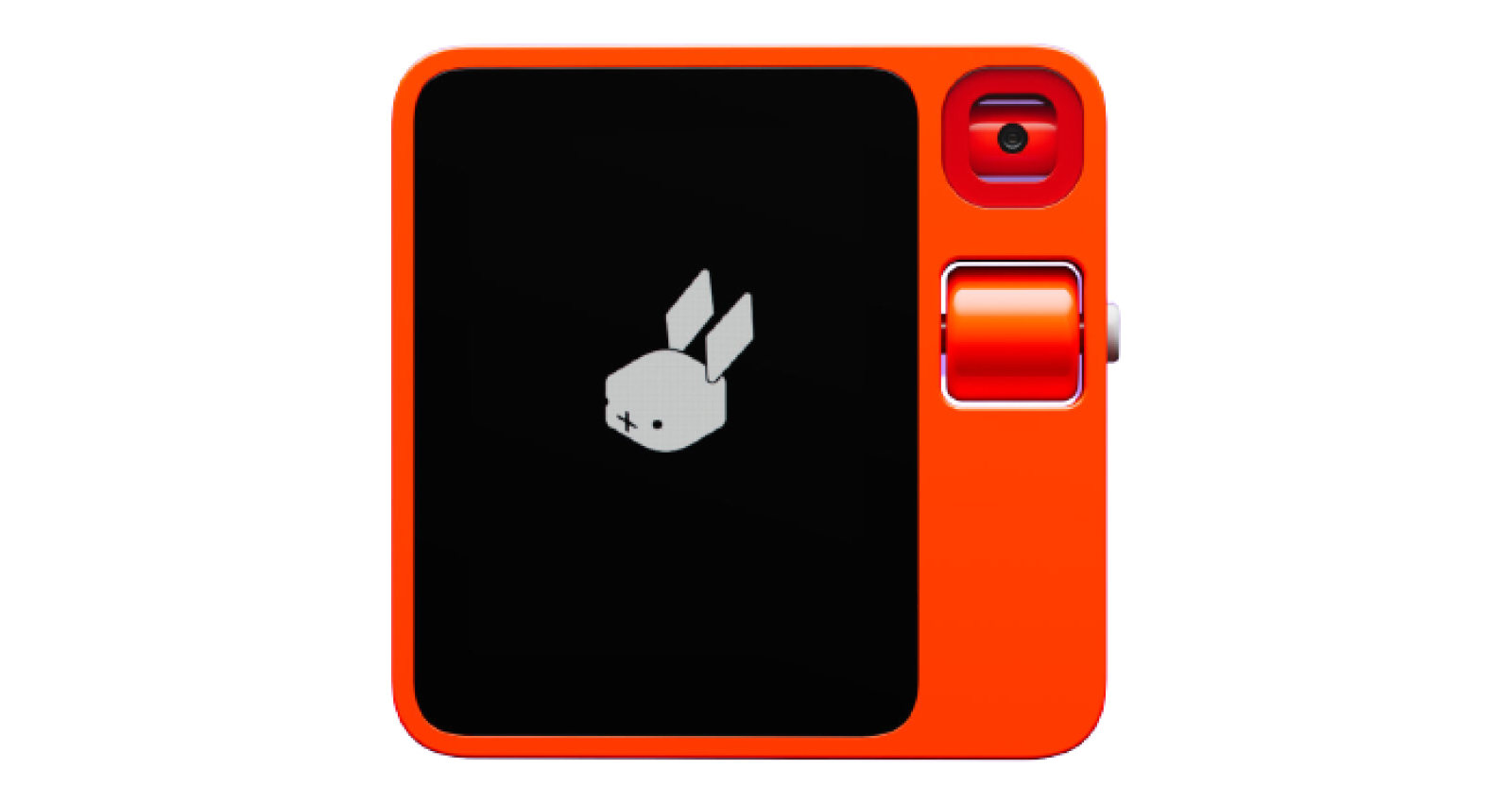The Rise of Brauncore

By now we’ve all seen the tech reviews of the Rabbit R1, how it’s basically an Android device in disguise and how it’s barely able to spot the difference between a Monstera and a coffee tree. But man, is this thing good-looking? Bright orange colors, actual physical buttons and finally, finally a device that does not rely on its touch screen.

Designed by Teenage Engineering, you can clearly see their design language shining bright in the R1. Looking back at a long history of beautiful industrial hardware designs, starting with mini synth OP-1, the lovely TP-7 audio recorder or the K.O.II sampler. Clear edges, a lot of visible details and physical buttons, everwhere. I discovered Teenage Engineering when they build the Playdate, a bright yellow gaming console that did not only feature the typical buttons, but a hand crank. How cool is that.

Teenage Engineering is not alone in their aesthetic – recently, we’ve seen a big trend towards this minimalist, technophile hardware style.
Hoto Tools is building drills, screwdrivers and glue guns that you would put on display in a your mid-century living room rather than hide it in a toolbox.

The Opal C1, a hyped webcam during the Zoomer years, could also be a part of a 1970s Hi-Fi set with it’s boxy, grip-texture design and it’s cheesegrater mic grill.
Designer Jon Lax coined a term for that style: Brauncore.
Brauncore pic.twitter.com/DIERtqmlQI
— Jon Lax (@jlax) November 23, 2023
Back in the 1950s
Braun. German company. Household appliances. Never the cool guy. I grew up with Braun hair dryers, mixers, shavers – all boasting this clean, functional design. Braun was this company that made everything, and you wouldn’t pay a lot of attention to it. This, however, changed in 2001.
When the original iPod was released, it was celebrated for its simple, minimalist design. Up until then, audio devices either tried to look elegant and expensive or hip spaceships. The iPod was different – and it reminded the design community of something. Quickly, it became clear that iPod design Jony Ive was inspired by a German designer: Dieter Rams. As head designer for Braun, he was responsible for the look and feel for a big part of the Braun lineup. The iPod did not just ressemble, but almost looked like a carbon copy of the Braun T3 pocket radio - when turned 90° to the side.
Rams, ever since become a design legend, famed outside of the design community. His design principles act like the ten commandments for aspiring creatives world-wide. Good design is innovative. Good design makes a product useful. Good design is aesthetic. Good design is honest. Less, but better.


Brauncore Principles
In an era where every device is operated through a touch screen, it seems like we have lost a lot of these design qualities. When not in use black mirrors give little hint to their function. No affordance. Every fridge, car console, watch, phone or thermostat does have its own learning curve. The tech fatigue is real.
Brauncore is much more than an aesthetic trend – it is the effort to design honest devices, following a few guiding principles:
- Do one thing well, not many things poorly. A single, focused purpose. Brauncore devices are designed to do one thing exceptionally well, rejecting the “kitchen sink” approach of cramming every feature imaginable into a single product.
- Affordance through visibility Instead of hiding functions behind touch screens, bright and visible buttons, dials and sliders indicate the function of each device.
- Light, minimalist colors. Think white, black, pops of primary. It’s a color palette that’s both sophisticated and playful, combined with neutral, yet matte metallic colors.
- Exposed screws and materials. Honesty in construction, a celebration of function. Brauncore rejects the idea of hiding everything behind a seamless facade. Those screws? They’re not a mistake, they’re a design statement, a way of acknowledging the craftsmanship that goes into the product.
- Boxy, geometric shapes. Clean lines, a focus on pure form. Brauncore embraces simplicity, shunning the curvy, organic shapes that dominated tech for a while. It’s a return to the confident, geometric forms that defined Braun’s golden age.
Personally, I’m a huge fan of Brauncore. Looking forward to seeing more and more devices exploring these principles. What would a Brauncore car control look like? How can we take Ram’s principles into the age of modern entertainment devices like gaming consoles? What would a Brauncore Phone look like? I guess this will a topic of another article.